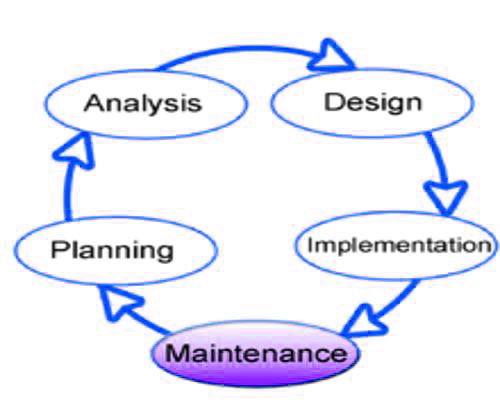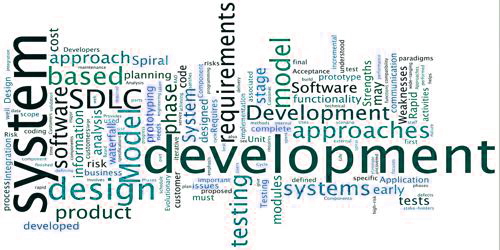The system development life cycle enables users to transform a newly-developed project into an operational one. It also referred to as the application development life-cycle, is a term used in systems engineering, information systems, and software engineering to describe a process for planning, creating, testing, and deploying an information system.
System Development Life Cycle Phases: In general, an SDLC methodology follows the following steps:

(1) System Planning: The Planning phase is the most crucial step in creating a successful system, during this phase you decide exactly what you want to do and the problems you’re trying to solve, by:
- Defining the problems, the objectives and the resources such as personnel and costs.
- Studying the ability to propose alternative solutions after meeting with clients, suppliers, consultants and employees.
- Studying how to make your product better than your competitors’.
After analyzing this data you will have three choices: develop a new system, improve the current system or leave the system as it is.
(2) System Analysis: The end user’s requirements should be determined and documented, what their expectations are for the system, and how it will perform. A feasibility study will be made for the project as well, involving determining whether it’s organizationally, economically, socially, technologically feasible. It’s very important to maintain strong communication level with the clients to make sure you have a clear vision of the finished product and its function.
(3) System Design: The design phase comes after a good understanding of customer’s requirements; this phase defines the elements of a system, the components, the security level, modules, architecture and the different interfaces and type of data that goes through the system.
A general system design can be done with a pen and a piece of paper to determine how the system will look like and how it will function, and then a detailed and expanded system design is produced, and it will meet all functional and technical requirements, logically and physically.
(4) Implementation and Deployment: This phase comes after a complete understanding of system requirements and specifications; it’s the actual construction Process after having a complete and illustrated design for the requested system.
In the Software Development Life Cycle, the actual code is written here, and if the system contains hardware, then the implementation phase will contain configuration and fine-tuning for the hardware to meet certain requirements and functions.
In this phase, the system is ready to be deployed and installed in customer’s premises, ready to become running, live and productive, training may be required for end users to make sure they know how to use the system and to get familiar with it, the implementation phase may take a long time and that depends on the complexity of the system and the solution it presents.
(5) System Testing and Integration: Bringing different components and subsystems together to create the whole integrated system, and then Introducing the system to different inputs to obtain and analyze its outputs and behaviour, and the way it functions. Testing is becoming more and more ‘important to ensure customer’s satisfaction, and it requires no knowledge in coding, hardware configuration or design.
Testing can be performed by real users or by a team of specialized personnel, it can also be systematic and automated to ensure that the actual outcomes are compared and equal to the predicted and desired outcomes.
(6) System Maintenance: In this phase, periodic maintenance for the system will be carried out to make sure that the system won’t become obsolete, this will include replacing the old hardware and continuously evaluating the system’s performance, it also includes providing latest updates for certain components to make sure it meets the right standards and the latest technologies to face current security threats.
These are the main six phases of the System Development Life Cycle, and it’s an iterative process for each project. It’s important to mention that excellent communication level should be maintained with the customer, and Prototypes are very important and helpful when it comes to meeting the requirements. By building the system in short iterations; we can guarantee meeting the customer’s requirements before we build the whole system.















